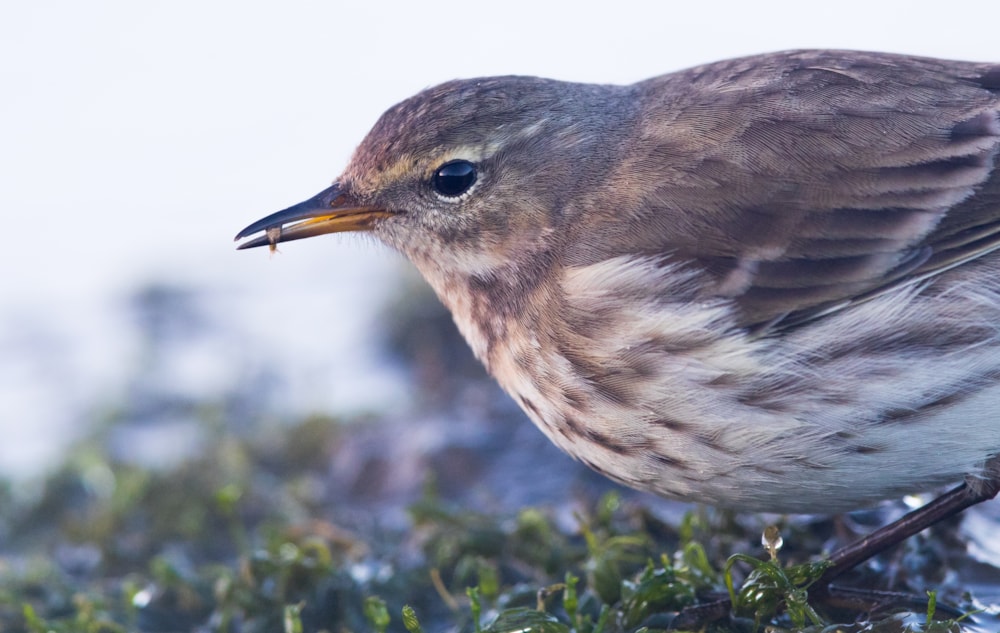As a keen birder and amateur wildlife photographer, I have been disheartened recently to read increasingly negative statements and accounts posted on social media relating to the actions of certain individuals while taking images of birds.
I would never condone the reckless and wilful disturbance of wildlife in aid of a photo. But some of these accusations are truly damning. Posts often refer to "getting too close", "flushing the bird", "pushing the bird" or "disturbing Schedule 1 birds", while one claimed that "photographers are the new egg collectors".
But is this the full picture? Are many of these heartfelt claims biased or opinionated in origin? Are these exclusively the actions of photographers? What is the truth and does it really matter if all those on the receiving end are tarred with the same brush? Well, having been on the receiving end … in my opinion, it really does matter!
I'm going to tiptoe through this article, conscious that my old colleague 'JB' had a very basic but relevant metaphor at hand during many intense and difficult discussions. I quote: "never point the finger at someone because there's always three more pointing back at yourself." Simply put, but it's so true that no-one is perfect. We all make mistakes; we all regret some decisions we make and we don't always know the answer – we have opinions and thoughts that bridge that reality gap.
Recently I have become truly anxious before posting bird images online, worried about the critical response that occasionally comes my way – usually based on opinion and not necessarily fact. The power of social media can be significant and unforgiving. Sending someone a judgemental or negative message can generate an unfair response in terms of undermining an individual's mental health, self-esteem and reputation. What follows is a typical example that affected me grievously.
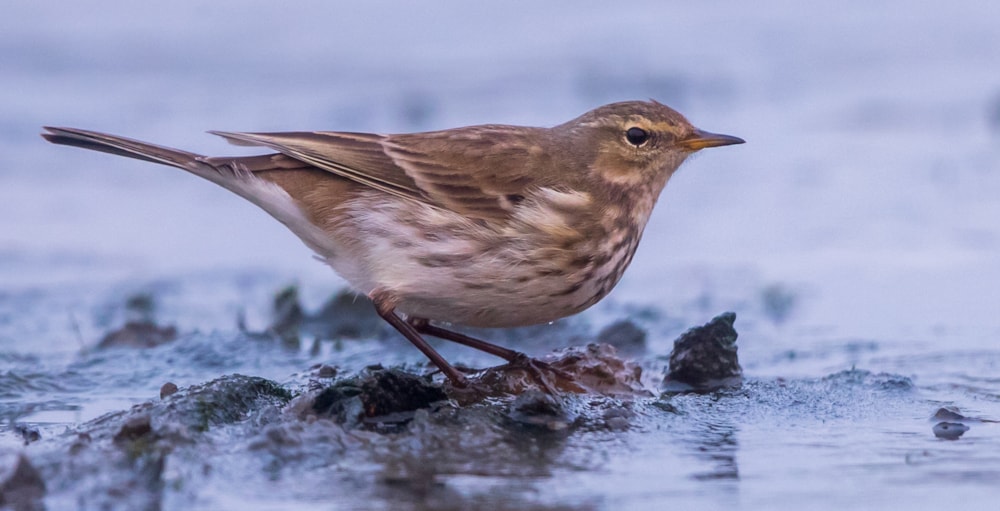
Water Pipit, Wilthorpe Marsh, South Yorkshire (Pete Garrity).
The Wilthorpe Marsh Water Pipit
It was back in December 2018 when at least one Water Pipit had been seen regularly at this South Yorkshire site. I had never seen this species, so I accompanied a friend to the site and we saw the pipit at distance, capturing a few record images at the time. Interestingly no one had managed to obtain any decent pictures of the bird due to its very flighty behaviour and lack of cover in the surrounding meadows. We noticed that on at least two occasions the pipit had flown down to a narrow stream which bisected a large meadow where cattle were grazing. I was still excited about seeing a new species and decided on a strategy to obtain better images and hopefully some video of the bird.
I returned before dawn on a freezing morning and set up my camera equipment and ground sheet under camouflage netting overlooking the small stream. This trickle was obviously teeming with life, including a variety of invertebrates residing in the algae-covered margins. Within minutes of daylight the Water Pipit appeared at the end of the stream and proceeded to walk straight past me probing the mud and feeding as it went. At times it was so close that the minimum focusing distance on my equipment was compromised, nevertheless I managed to get some reasonable images. The variety of invertebrates the bird was extracting from the mud was fascinating, from tiny larvae to large, juicy grubs.
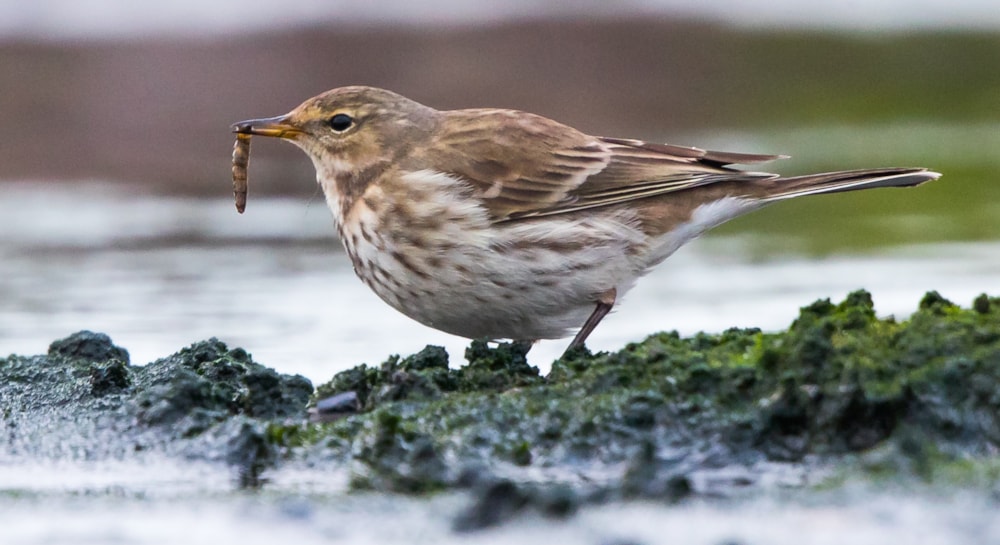
The image that sparked slander against the author, which eventually supported an article and graced the cover of the journal of the Yorkshire Naturalists' Union in August 2020 (Pete Garrity).
Over three separate days I managed to capture some better images and acceptable video of the pipit. On each occasion I remained under the camouflage netting until the bird left, and then I quickly packed up and left the marsh. At no point did I disturb the pipit.
I subsequently – and probably naively – posted the results on social media, including an image of the bird holding a large grub, similar to a small leatherjacket. Some of you can probably guess what happened next. More than one local 'birder' took exception to my efforts and used Twitter to launch an aggressive and opinionated campaign against me including phrases such as "feeding the bird mealworms", "when will you have enough pictures?", "laying on the ground under netting?", "too close to the bird!" and so on.
The situation escalated at which point I had no choice but to threaten legal action against the slanderous content – it hurts when you know untruths are being directed towards you. The negative posts stopped, but it was too late – the damage had been done.
In October 2020, almost two years later, I was watching the Brown Shrike at Johnny Brown's Common and chatting to birders present. I bumped into a chap whom two weeks earlier I had encountered at Flamborough Head and helped him locate a Red-backed Shrike on the coastal path. A typically amiable conversation covered the usual topics but eventually went as follows:
Him: "Have you come far today?"
Me: "Not too far, I live at Green Moor"
Him (in an audibly lower tone): "Ohhh, are you Pete Garrity?"
Me: "Yes but how did you know? That sounds ominous"
Chap: "Yes, notorious – you're the one that fed the Wilthorpe Marsh Water Pipit mealworms!"
I attempted to explain the truth, the history of the situation and that the images and video clearly show the natural behaviour of the bird and the wide variety of natural food it was finding, but I believe this reached deaf ears and the gentleman had already made his mind up. He went very quiet and we didn't speak again. I was mortified and depressed for days after. That is the incredible power of mistruths targeted at innocent people on social media. It was no doubt a knee-jerk opinion at the time, but it hurts me to this very day and I'm still waiting for an apology.
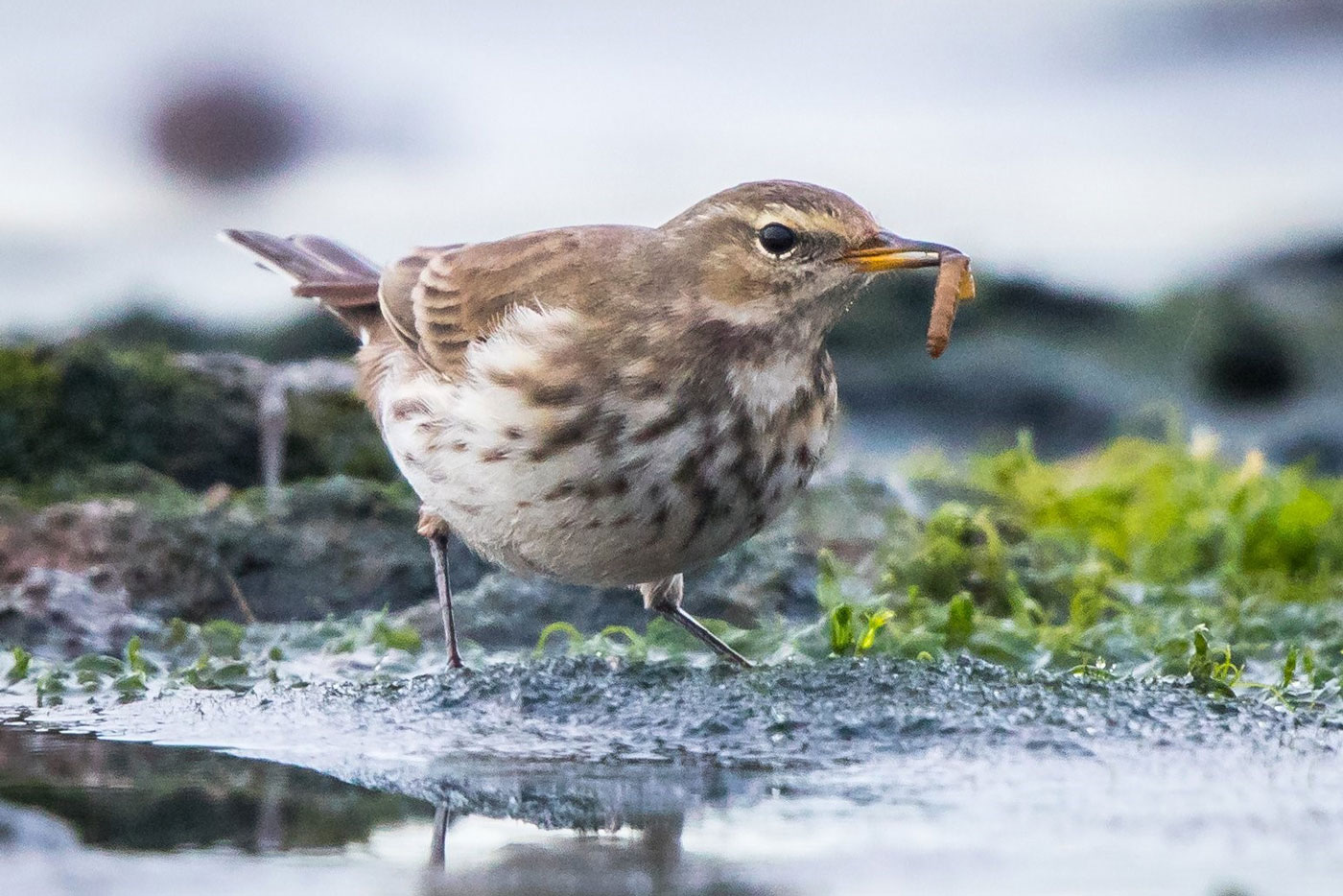
The Wilthorpe Marsh Water Pipit fed on a wide range of invertebrate prey, but it was the larger grubs that generated negative comments about Pete allegedly feeding the bird mealworms (Pete Garrity).
Let's have a look at the 'standard' accusations a little more closely in an attempt to understand the motivation behind the obvious tensions that exist between the traditional views of birding and what now seems to be the norm of 'birders with cameras' (more on this later).
Getting too close
Since wildlife photography emerged around 130 years ago, one of the overriding necessities to produce many award-winning images has been to get close to the subject.
Incredible preparation, methodology and substantial amounts of time can be required to achieve success, but this is not always the case. Simply being in the right place at the right time, walking up to a subject or being approached by the subject can results in the perfect situation to capture a wonderful image or footage.
The action of getting close to a bird and the reaction of the bird may vary massively. Simply walking up to a thrush in the middle of a meadow won't normally work. The bird will obviously flush if you get too close. In contrast, getting within feet of a Ruddy Turnstone on a pier or a Grey Phalarope feeding on a small pond can be very easy and the birds won't show any change in behaviour or other signs of being disturbed.
The 'proximity argument' has a very wide spectrum – each case is different and a "one rule fits all" approach simply does not stack up. It's not about how close the observer or photographer is to wildlife; it's about how they interpret and respond to the behaviour of the subject and I will cover this point next.
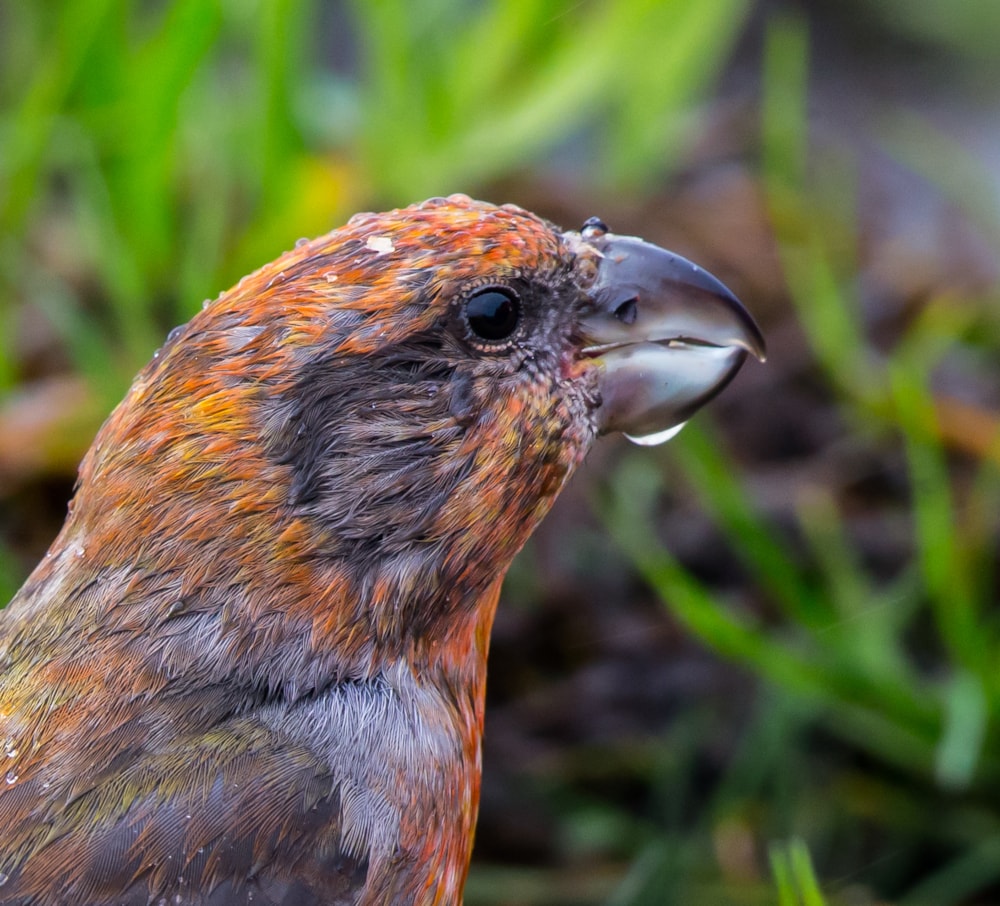
Acceptably close? A Parrot Crossbill drinking from a Shetland puddle in autumn 2017 (Peter Garrity).
Flushing or pushing the bird
This is something we've all done at some point. The general public, dog walkers and birders often flush birds – normally ones that they are not aware of that fly when they unintentionally get too close. It's the same with birders with cameras, serious amateurs and even professional photographers/videographers.
If you've ever been to a twitch when a seriously rare bird has appeared and is minding its own business trying to feed – then hundreds of humans appear with binoculars, scopes, tripods and cameras, all jockeying for position in a wave of movement to try to get a good view, then you'll understand why flushing or pushing is not exclusively related to photographers.
In fact, if you have ever been birding in Shetland during the autumn, then you will be aware of the 'organised flushes' that sometimes take place to push rare migrants out of their habitat so birders can get a clear view of an otherwise skulking species, notably either Pallas's Grasshopper or Lanceolated Warblers.
Just to be clear, I'm certainly not in a position to criticise this as I have been present at such events, but I don't think other birders that have chased a migrant around should be condemning photographers either.
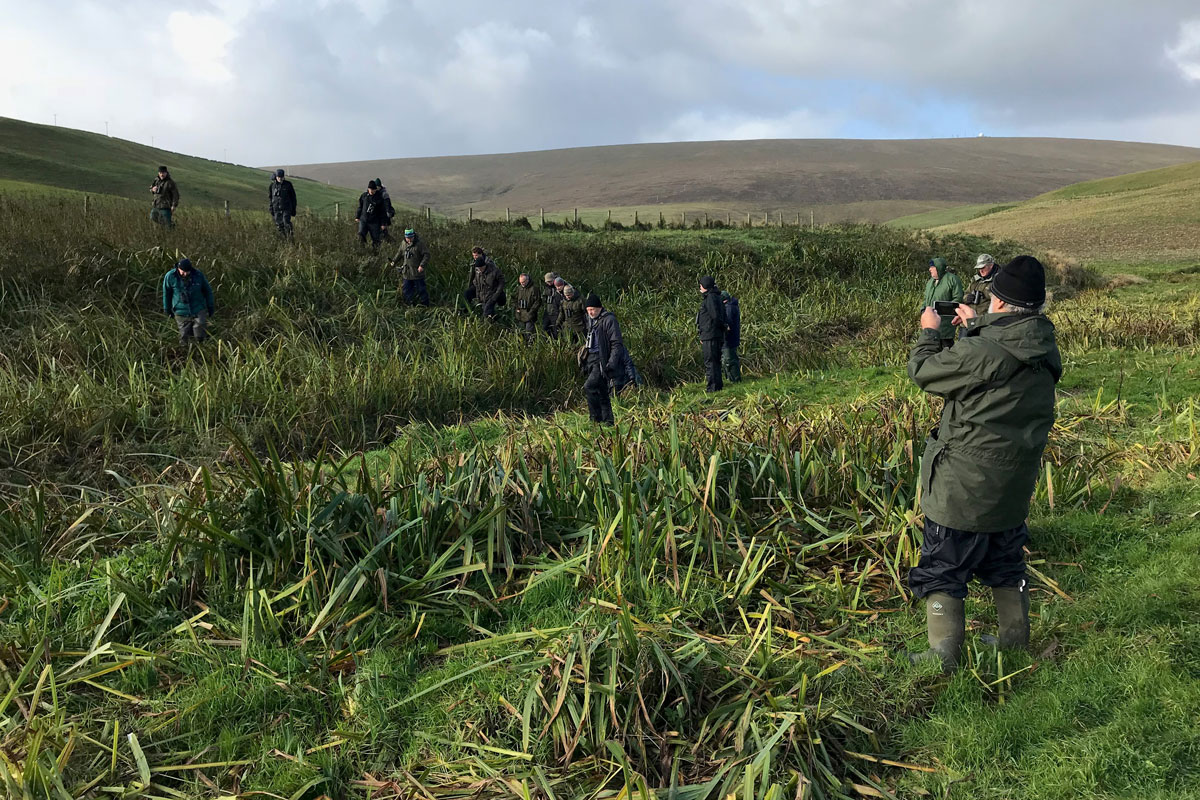
Organised flush in Shetland in autumn 2018 (Pete Garrity).
This accusation is also often targeted at the photographers with long telephoto lenses. The truth is that even with this far-reaching equipment the subject normally has to be relatively close to get an acceptably sharp and professional image that can be of sufficient quality to be published, which can encourage individuals to continue to get closer.
This is commonly discussed among the photographer community and the vast majority will back off, stand still and wait for the subject to return to its normal behaviour before attempting to get further images. This is the common sense and responsible approach and, for the majority of photographers, the 'long lens' stereotypes just don't apply. There is a minority however who will continue to chase birds to get an image and personally that is something I disagree with – but the same could be said for birders approaching for closer views, too.
This is probably the moment to discuss the range of birders with cameras. A very high proportion of birders now carry a camera, whether they are phonescoping, digiscoping, or using a bridge camera or a DSLR with a telephoto lens. Today there's a huge selection of affordable equipment available and the 'birder with camera' is now the norm. At face value this shouldn't be a problem, but there are worries that modern technology is changing the behaviour of the traditional birding community – more and more people want to obtain better images and, perhaps, become a little obsessive in the process?
One claim is that the superb images posted online on a daily basis have encouraged the evolution of the "togger." My understanding of this phrase relates to the increasing number of individuals who appear carrying a camera without binoculars and often with little or no knowledge of their subjects. This appears to contradict with the traditional view of birding held by many people and, unfortunately, this opinion has widened to include all photographers.
But why should anyone dictate the correct way to pursue an interest or hobby to others? The key driver should be the welfare of the subject and therefore any individual who wilfully compromises this should be accountable, regardless of whether they carry a camera or not.
You may be surprised to hear that recently I was accused by one of my followers on Twitter of swearing at them for being too close to a bird. It certainly wasn't me but occasionally I do politely ask others to step back to allow birds to act naturally. I think this example polarises the issue of flushing or pushing and we should all take responsibility to ensure the subject's behaviour remains natural. If you are obviously pushing a bird away then you stop, step back and wait – it's really a simple concept.
Equally, if you are closer than others to a bird and it's going about its normal routine, feeding, preening, loafing or singing, then that shouldn't be seen as an issue and shouldn't open you up to abuse, either in person or online.
Disturbing Schedule 1 birds
To be clear about Schedule 1 birds and the legal protection they are afforded – this is related to protection against any disturbance while nesting and/or rearing young, at or near the nest. It also covers the disturbance of any dependent young of such species. The key word here is "disturbance", which echoes the basic principles discussed previously. It is not illegal to take pictures of Schedule 1 birds during the breeding season, but it is common sense not to disturb them nor approach nest sites.
One of the species regularly highlighted on social media is Black-necked Grebe. As they arrive to breeding grounds in the UK in spring, they are developing their superb summer plumage and many photographers take this opportunity to obtain images before vegetation grows up and obstructs views. One of these sites is St Aidans RSPB near Leeds. Trails are open to the public, and dog walking is permitted. Channels run parallel to the trails and the grebes often spend time swimming and feeding here, although they tend to breed away from the trails in the reedbed areas with no access.
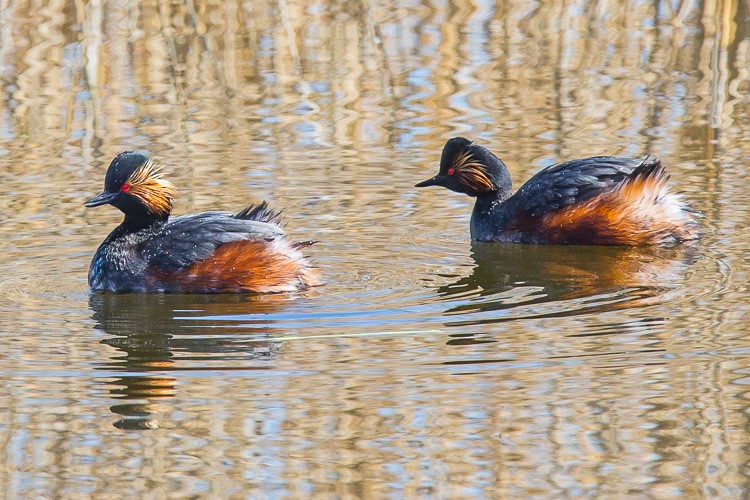
It's perfectly possible to obtain nice images of Black-necked Grebes from the footpath at St Aidans (Pete Garrity).
I've been to St Aidans a few times and have taken images of a wide variety of species. Along with many others I have taken images from the trails and also from the verge, where it widens between the path and the reeds that skirt the edge of the channel. I personally don't think it's a problem stood on the verge overlooking the channel – in my experience the birds are not disturbed by doing this.
Having said that, recent reports of photographers flattening reeds and laying at the water's edge have understandably upset a number of people – and, when considering the status of this species, seems excessive. Although this may not contravene the Schedule 1 policy, it isn't necessary and I would expect it is likely to push the birds to the back of the channel. Good images can be obtained without going to these lengths. No doubt those that did this will have their own opinion but I haven't seen anyone own up to it yet.
I'm sure we can all recall times when it's been necessary to climb a wall, lay down in the grass, utilise stepladders or climb on the back of someone's shoulders to see a good bird – the difference is these are rare breeders and we all should take that extra bit of care not to disturb them.
The grebes take us nicely on to the next point …
'Photographers are the new egg collectors'
This comment was associated with an online discussion on rare breeding birds and certainly resonated with me. "Wow, that must have been borne from deep rooted anguish, disappointment and perhaps outrage at photographers", I thought.
While I agree that the reed-flattening incident at St Aidan's doesn't paint a pretty picture, comparing photographers to egg collectors is ludicrous. The vast majority of birders and photographers are fully supportive of measures in place to protect rare breeding birds and the actions of a few individuals is by no means representative.
The apparent conflict between some birders and photographers is reinforced and amplified by social media. I can understand that the increase in popularity of digital photography and the resultant numbers of photographers who post images can be a cultural shock to traditional birders that have a passionate and deep-rooted love of ornithology. It is, however, worth a taking step back to consider why this came about and why we shouldn't be surprised.
A generation ago, when digital photography was unheard of and long-lens photography was cumbersome and expensive, there were only a handful of iconic photographers and filmmakers that became highly revered and considered heroes by some, including me. The conduits for their work were television, books, magazines and newspapers. Incredible images and films inspired many people to become interested in, and often involved with, nature and conservation. It's also interesting to note that some of those burgeoning environmentalists and ornithologists originally began as egg collectors, as at the time it was a relatively normal childhood pastime.
Where would we be without organisations such as the BTO, RSPB, SOC or RSPCA? How important are local societies, charities and groups that issue newsletters and hold indoor meetings? What would life be like without wildlife websites, YouTube, documentaries on TV, books and magazines such as Birdwatch? What about those iconic TV programmes, such as Springwatch or Countryfile, or the invaluable bird news service provided by BirdGuides?
Ask yourself what all these vital organisations and media services have in common. The answer is they all use high-quality imagery and video, which doesn't appear by magic! Dedicated professionals and amateurs alike spend many hours in the field producing this content in order for it to be shared and enjoyed by the wider population.
Parting thoughts
My advice for all bird photographers or birders with cameras would be to observe the behaviour of your subject. Don't willingly flush or push it. Get close if necessary but without changing the subject's natural behaviour. If you do disturb it, then step back and wait for another opportunity. Consider other birders without cameras and try not to obstruct their view. Do not willingly disturb rare breeding birds … but most of you know this already!
For birders without cameras, please don't complain if a photographer is closer than you if the subject is behaving naturally. I'm sure you've all flushed or pushed birds before but if you think a bird is being repeatedly disturbed then talk to the person(s) involved at the time and in a constructive manner, rather than posting negative comments on social media after the event. People make mistakes, give them a chance. Photographers that don't care about wildlife are scarce and it's unlikely that you'll ever meet one.

